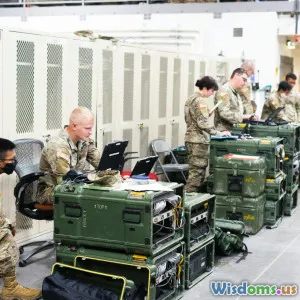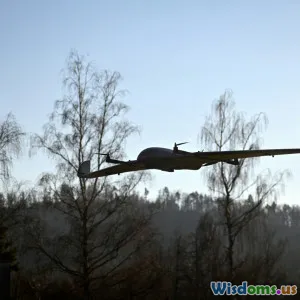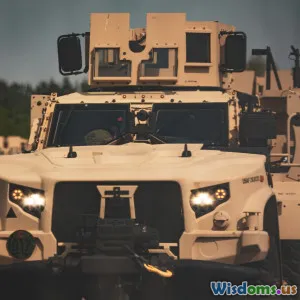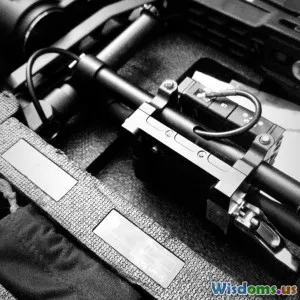
StepbyStep Guide to Deploying Mobile AntiAircraft Systems
9 min read A detailed guide on deploying mobile anti-aircraft systems effectively for tactical superiority. (0 Reviews)
Step-by-Step Guide to Deploying Mobile Anti-Aircraft Systems
Introduction
In an era where modern air threats continue to evolve rapidly—from drones and UAVs to high-speed fighter jets—the capability to effectively deploy mobile anti-aircraft systems has never been more critical. These systems offer the flexibility, mobility, and rapid-response needed to protect vital military assets, infrastructure, and civilian populations from aerial attacks. Yet deploying them correctly is an intricate challenge involving tactical decisions, logistical planning, and technological expertise.
This comprehensive guide takes you through the essential steps, from initial planning to final execution, ensuring you have a clear understanding of how to maximize the operational efficiency and impact of mobile anti-aircraft units.
Understanding Mobile Anti-Aircraft Systems
What Are Mobile Anti-Aircraft Systems?
Mobile Anti-Aircraft Systems (MAAS) are self-contained, mobile platforms equipped with weapons and radar designed to detect, track, and destroy hostile airborne targets. Unlike fixed systems that remain static, MAAS are mounted on wheeled or tracked vehicles, facilitating quick repositioning on the battlefield or strategic areas, which enhances survivability and responsiveness.
Examples include:
- Russian Pantsir-S1: Combines both missiles and guns on a tracked chassis with advanced radar targeting.
- American MIM-104 Patriot system (mobile variant): Highly versatile missile system renowned for its range and tracking capabilities.
- S-400 Triumf (mobile deployment): An advanced multi-function air defense system utilized for long-range interception.
Why Mobility Matters
Battlefield dynamics are unpredictable; a fixed air defense site can become a target once located by the enemy. Mobility enables:
- Frequent repositioning to avoid detection or destruction.
- Ability to support advancing or retreating forces.
- Flexibility to be deployed in various terrain and threat environments.
Step 1: Preliminary Assessment and Planning
Before any deployment:
- Conduct Threat Analysis: Assess aerial threats specific to the mission area—drones, cruise missiles, aircraft, ballistic missiles—to determine system requirements such as range, altitude coverage, and rate of fire.
- Environmental Evaluation: Terrain, weather patterns, and electromagnetic interference affect radar performance and mobility. For example, hilly terrain may restrict radar line of sight.
- Define Mission Objectives: Is the system protecting a fixed installation, a maneuver unit, or a critical event? Each use case demands different deployment schemes.
Example Insight: The Israeli Iron Dome deployment showcases thorough risk and terrain analysis facilitating urban-area deployment against short-range projectiles.
Step 2: Selection of Suitable Systems and Equipment
Based on assessment:
- Choose systems with the proper balance of firepower, portability, and radar sophistication.
- Ensure compatibility with command and control networks for real-time data sharing.
Considerations include:
- Radar Range and Precision: Longer range systems enable earlier target engagement, crucial for high-speed threats.
- Reaction Time: Systems with rapid detection-to-engagement cycles improve survival probabilities.
- Ammunition Load: Mobile systems must carry enough rounds or missiles without restricting mobility.
For instance, during NATO exercises, combining short-range and medium-range mobile anti-aircraft units provided layered defense and operational advantage.
Step 3: Training and Crew Preparedness
Effective deployment hinges on well-trained personnel:
- Operator training on weapon systems, targeting, and real-time threat evaluation.
- Maintenance teams must be versed in vehicle and electronic system upkeep to prevent failures in the field.
- Simulated drills incorporating electronic warfare and jamming scenarios are essential.
Quote from U.S. Army Air Defense Commander LTC Sarah McDonald: “Training under realistic conditions ensures that crews can adapt swiftly and decisively when seconds matter.”
Step 4: Deployment Logistics and Transport
Efficient transportation logistics are fundamental:
- Plan routes considering speed, terrain, and enemy detection risks.
- Prepare for rapid offloading and setup times; some systems can be operational within minutes of arrival.
- Coordinate support vehicles carrying fuel, ammunition, and spares to maintain operational tempo.
Real-World Example: NATO’s swift deployment of mobile anti-aircraft assets during the Baltic exercises leveraged pre-planned rail and road corridors to minimize transit time.
Step 5: Site Selection and Positioning
Key factors to consider:
- Elevation and Line of Sight: Placement on elevated ground extends radar horizon.
- Survivability and Concealment: Utilize natural camouflage and defilade positions to reduce detection.
- Integration with Other Assets: Position to complement fixed air defense and electronic warfare systems, establishing layered and redundant coverage.
Data Point: An analysis of the 2006 Lebanon conflict revealed that mobile units poorly sited often failed against precision-guided munitions due to lack of shielding and concealment.
Step 6: Communications and Command Integration
Mobile anti-aircraft units must seamlessly integrate into the broader air defense network:
- Equipped with secure radios and data links compatible with higher-echelon command centers.
- Implement real-time data sharing for collective situational awareness.
- Adopt standardized protocols like Link 16 or NATO standard message formats for interoperability.
Emerging technologies such as AI-assisted target prioritization depend on seamless network integration, improving engagement decisions significantly.
Step 7: Engaging and Countering Aerial Threats
Once deployed:
- Constantly monitor airspace via radar and electro-optical sensors.
- Employ layered engagement tactics: for example, missiles first to down distant threats, complemented by rapid-fire guns for close-range emergencies.
- Continuously adapt to evolving threat patterns, utilizing electronic countermeasures against jamming.
Real-life Case: During Operation Desert Storm, mobile anti-aircraft units achieved a high interception rate against Scud missile launches due to layered defensive deployments.
Step 8: Maintenance and Sustainability
Sustain prolonged operations by:
- Regular inspections to detect wear and tear from movement and combat operations.
- Logistics chains for timely delivery of spare parts and ammunition.
- Training on field repairs to keep the system operational despite enemy action or harsh environmental conditions.
Insight from Military Logistics Expert Dr. Anya Jacobs: “Proactive maintenance enables mobile systems to maintain near 100% operational readiness, critical for deterrence.”
Conclusion
Deploying mobile anti-aircraft systems is a multifaceted task requiring meticulous planning, expert training, efficient logistics, and tactical acumen. Modern conflicts demand air defense systems to be agile, responsive, and deeply integrated with broader command structures.
From preparing your team and selecting the right systems to choosing the ideal terrain and maintaining continuous operational readiness, each step is vital to leveraging the full advantage of mobility in anti-air warfare.
By mastering these deployment strategies, commanders can significantly bolster their air defense posture—protecting lives, assets, and ultimately securing the battlefield dominance in a world where aerial threats relentlessly evolve.
Embarking on this journey not only improves defense capabilities but also prepares forces to meet future aerial warfare challenges head-on.
Rate the Post
User Reviews
Popular Posts




















